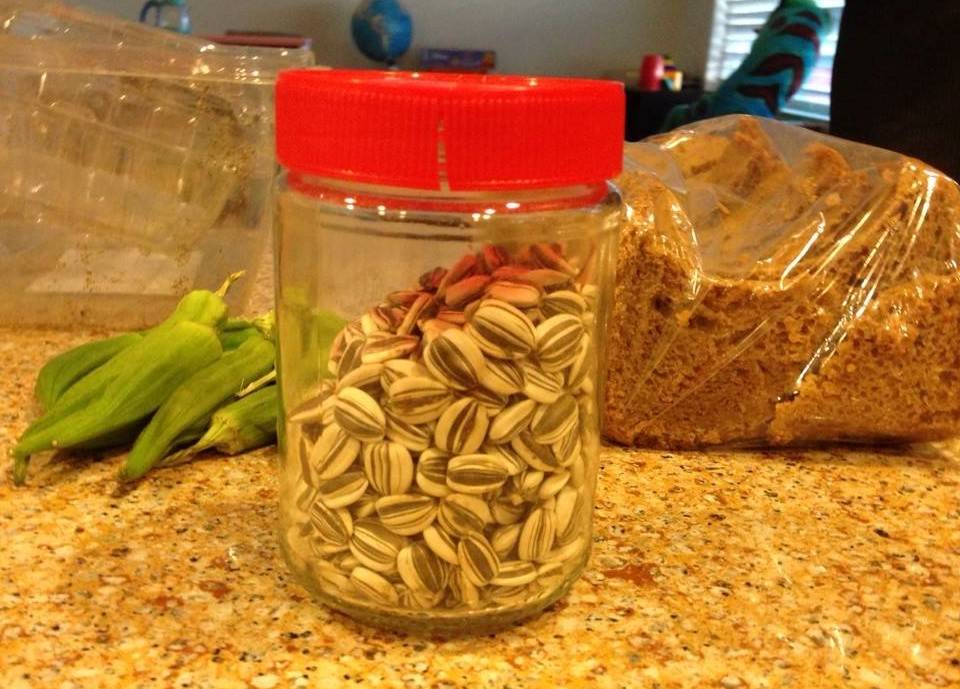IN SEASON: Part I: Seed saving made simple for home gardeners
Note: This is Part 1 of a three-part series
What gardener doesn’t delight in browsing the seed catalogues as they arrive in the spring? One could easily spend an entire garden budget on the wide assortment of rare varieties from various online retailers. While seed shopping and growing new and interesting varieties is fun, it can also be expensive. Fortunately for those looking to save some money, seed saving is an easy process.
Why save seeds when you can just buy them?
This is a question I field quite often. Saving money is just one reason to save seeds. Another more important reason in my view, is that crops adapt over time to the climate and conditions that they are grown in. There are precious few seed savers working to develop seeds for hot dry climates like ours.
Personally, one of my goals is to develop vegetable crops that need less watering and can more easily withstand our brutal summers. I am generally not in favor of babying plants through 110-degree afternoons.
The other reason I feel that seed saving is so important is that in the last several decades large corporations have patented many seed varieties available to backyard gardeners.
I am not a fan of monopolies in general, especially when it comes to our food supply. If I do purchase seed, I prefer to buy them from small reputable companies rather than whatever is being sold at the big box stores.
Seed saving starts before planting
Long before you ever harvest your first crop, seed saving begins. It starts with selecting and purchasing quality seed stock, or perhaps obtaining some for free from a friend or seed bank. When selecting seeds for eventual seed saving, there is some terminology you need to be aware of.
Heirlooms and Hybrids:
Heirloom seeds are often passed down through generations and many can date their lineage back 50 years or more. Hybrid plants are two varieties that have been bred to create a third variety. After the first generation, hybridized plants are often genetically unstable. If you save seeds from a hybrid plant, you will likely not get a variety that is true to type. This means what you grow will not be like its parent.
There are seed companies dedicated solely to growing and collecting heirloom seeds to increase their availability to a greater number of people. You can even find heirloom seed companies that specialize in certain growing regions. There are a few that focus on climates similar to ours or the U.S. Southwest in general.
Crops grown from heirloom seeds are generally better suited for the climate and conditions they have been grown in and their flavor is often superior to many hybrids that are counterparts that are available. The drawback to heirloom seeds is that they may not have the same productive vigor of a first-generation hybridized crop.
Crops grown from the saved seeds of heirloom crops may take on different traits over time and plants may not be identical to each other. If you have purchased heirloom tomatoes for example, you may have noticed they come in a range of shapes, sizes, and colors even within the same variety of tomato. If uniformity is what you are after, this can be a bother.
Self-pollinating and open-pollinated:
Self-pollinating crops are able to pollinate themselves without help from insects or wind. Some examples of self-pollinating seeds are beans and tomatoes. These are some of the easiest type of crops to grow for seed saving, especially in a small garden.
Open-pollinated crops are pollinated by the wind or insects such as bees. Examples of open-pollinating crops are corn and squash. Growing more than one variety close together will likely lead to cross-pollination and the seeds you save may grow into a different crop.
Cross-pollination could lead to great new varieties but is not helpful if you want to grow the same crop year after year. If you would like to grow these types of crops for seed saving you will need to leave plenty of room between different varieties. In a small garden it would be more ideal to just grow one kind of squash for example.
All this scientific terminology might be a bit overwhelming to digest but they are important to be aware of if you plan to save and breed seeds for the future. Join me next week for part 2 in this series as I delve into the topic of self-pollinated seeds and methods for growing, collecting, and storing them.
Terri Meehan is the founder of Southern Nevada Gardening Association, a regional group. She is a garden mentor and local farmer in Pahrump. Send questions or comments to her at sonvgarden@gmail.com
















